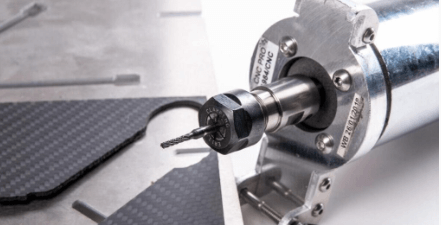Innovative Strategies for PCB Production and Assembly Processes
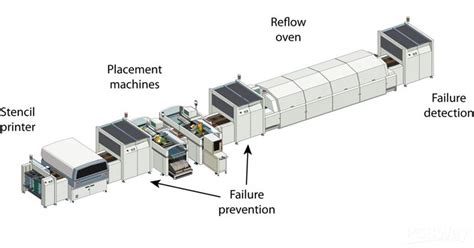
Key Takeaways
In the realm of PCB production and assembly, understanding the critical components and processes is essential for both newcomers and seasoned professionals in the electronics industry. The seamless integration of new technologies, particularly in pcba (printed circuit board assembly), has revolutionized how manufacturers approach production. For instance, advancements in automation have significantly enhanced the speed and accuracy of pcb assembly, allowing businesses to meet increasing demands without compromising quality. Furthermore, incorporating best practices in quality control is pivotal; implementing stringent checks throughout the pcb production process can mitigate defects and ensure consistent performance.
Cost efficiency must also be prioritized, with strategies such as lean manufacturing and just-in-time delivery gaining traction. These methods not only reduce waste but also streamline operations—all while maintaining high standards in production quality. As industries evolve, staying abreast of emerging trends will be key to sustaining competitive advantage.
"Incorporating innovative strategies in your PCB operations can lead to smarter manufacturing processes that enhance both efficiency and output quality."
Ultimately, the focus should be on balancing these strategies with sustainability efforts to ensure that progress in pcb production and assembly aligns with environmental responsibility. Adapting these innovative approaches will drive future growth and development within the sector, positioning companies at the forefront of this dynamic industry.

Understanding the Fundamentals of PCB Production and Assembly
The world of PCB production and assembly is complex yet essential for the electronics industry. At its core, PCB assembly (PCBA) involves several critical components, including design, material selection, and manufacturing techniques. The production process typically begins with the creation of a schematic design, which acts as a blueprint for the layout of the printed circuit board. Once designed, various materials such as copper-clad laminates are utilized to create the actual board. This phase includes essential steps like etching and drilling, where intricate pathways are formed to facilitate electrical connections.
The assembly stage then follows, where components such as resistors, capacitors, and integrated circuits are soldered onto the board. Modern advances in technology have paved the way for techniques such as surface-mount technology (SMT), which enhances efficiency while reducing manufacturing time compared to traditional methods. Furthermore, implementing strategies like automated optical inspection (AOI) contributes significantly to ensuring quality during these processes by identifying defects early on.
In addition to these methodologies, an understanding of environmental impacts has led to innovations focusing on sustainability in both PCB production and assembly. By utilizing eco-friendly materials and efficient manufacturing practices, companies can optimize their operations while adhering to increasingly stringent environmental regulations. Mastery over these fundamentals not only enhances operational efficiency but also positions businesses favorably within a highly competitive electronics market. Understanding these elements is crucial for anyone looking to navigate the intricate landscape of PCB manufacturing effectively.
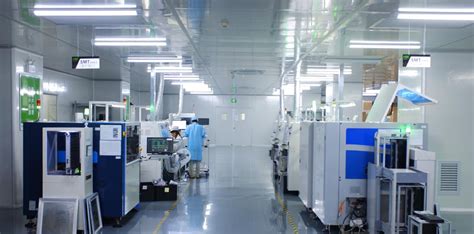
Emerging Technologies Transforming PCB Manufacturing
The landscape of PCB production and assembly is being significantly reshaped by a variety of emerging technologies that enhance both process efficiency and product quality. One notable advancement is the integration of automated systems in the pcb assembly process, which dramatically reduces human error and enhances throughput. The use of advanced robotics and precision machines in pcba enables manufacturers to achieve higher accuracy and faster production rates, paving the way for more complex designs.
Another innovative technology making waves is the deployment of 3D printing. This method allows for rapid prototyping and iteration, transforming how companies approach product development cycles. Moreover, it offers unprecedented flexibility in creating intricate designs that would be difficult or impossible to achieve with traditional methods. As a result, 3D printing not only fosters creativity but also enables significant reductions in material waste, aligning with sustainable manufacturing principles.
Artificial Intelligence (AI) is also playing a critical role in optimizing PCB manufacturing. By leveraging machine learning algorithms, manufacturers can predict failures before they occur, conduct real-time monitoring for quality assurance, and refine their processes based on data analytics. This leads to better decision-making and substantial improvements in production efficiency.
Here’s a summary table featuring some of these emerging technologies:
| Technology | Benefits |
|---|---|
| Automated Systems | Increased accuracy, reduced labor costs |
| 3D Printing | Rapid prototyping, material waste reduction |
| Artificial Intelligence (AI) | Predictive maintenance, process optimization |
These advancements not only streamline production but also contribute significantly to the overall quality of the final products in the electronics industry. As technology continues to evolve, staying updated on these trends will be essential for companies looking to maintain competitive advantages in PCB manufacturing.
Strategies for Enhancing Efficiency in PCB Assembly Processes
Improving efficiency in PCB assembly processes is crucial for meeting the growing demands of the electronics industry while maintaining high-quality standards. One of the key strategies involves the integration of advanced technologies, such as automated soldering techniques and pick-and-place machines, which enhance precision and speed in PCBA workflows. Furthermore, employing software solutions for real-time monitoring and data analytics allows manufacturers to identify bottlenecks in the assembly line and streamline operations effectively. Implementing structured training programs for workers can also significantly elevate their skills, leading to reduced assembly times and fewer defects. Another effective approach is the adoption of lean manufacturing principles, which focus on minimizing waste and optimizing production flows. This not only enhances productivity but also contributes to cost savings in materials and labor. Moreover, collaboration with suppliers for just-in-time inventory management can reduce storage costs while ensuring that components are readily available when needed. By focusing on these multifaceted strategies, organizations can improve their PCB assembly efficiency substantially, ensuring they remain competitive in a rapidly evolving market.
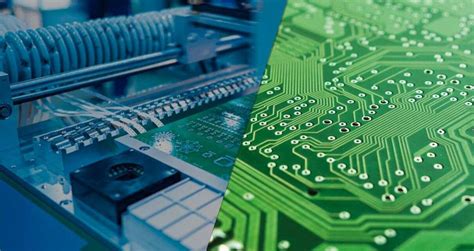
Implementing Quality Control Best Practices in PCB Production
Quality control is a critical aspect of PCB production and assembly that directly influences the overall performance and reliability of electronic devices. To ensure optimal quality, it’s essential to integrate standardized best practices throughout the PCBA process. This begins with rigorous testing protocols, including automated optical inspection (AOI) and functional testing, to identify defects at various stages of production. Implementing a robust system for monitoring key metrics, such as yield rates and defect densities, can provide valuable insights that drive continuous improvement. Adoption of advanced tracking technologies, like RFID and barcode systems, facilitates real-time data collection and enhances traceability within the supply chain. By fostering a culture of quality awareness among employees through training programs and incentivizing defect reporting, manufacturers can significantly enhance their overall output quality. Ultimately, a systematic approach to quality control not only minimizes production errors but also optimizes efficiency in pcb assembly, ensuring that final products meet the necessary standards for performance and durability across diverse applications in the electronics industry.
Cost Reduction Techniques in PCB Production and Assembly
Cost reduction in PCB production and assembly is a critical objective for manufacturers seeking to enhance their competitiveness in the electronics sector. One of the foremost techniques is the optimization of the supply chain, which involves sourcing raw materials at lower costs while maintaining quality standards. By establishing long-term relationships with suppliers, companies can negotiate better rates and improve their inventory management, thereby minimizing excess stock and waste. Additionally, implementing lean manufacturing principles can significantly reduce waste during production processes. This includes adopting techniques like Just-in-Time (JIT) delivery, which helps synchronize production schedules and minimizes holding costs.
Another aspect to consider in reducing costs is investing in advanced technologies such as automated PCBA systems that streamline the assembly process. Automation not only enhances efficiency but also reduces labor costs over time. It has been noted that automated systems can lead to higher accuracy and consistency during the pcb assembly, which directly contributes to lowering rework rates and defective units.
Furthermore, regular training for employees on best practices in both production and assembly can lead to innovative solutions that improve operational efficiency. By fostering a culture of continuous improvement, manufacturers can identify cost-saving opportunities across various stages of production. In summary, focusing on optimizing supply chains, embracing automation, and investing in employee training are essential strategies for achieving significant cost reductions in PCB production and assembly processes while ensuring high-quality outputs.
The Role of Automation in Modern PCB Manufacturing
In recent years, automation has emerged as a pivotal element in transforming PCB production and assembly processes, commonly referred to as PCBA. By integrating advanced technologies such as robotics and artificial intelligence, manufacturers are streamlining operations and achieving unprecedented levels of precision and efficiency. Automation simplifies complex procedures in PCB assembly, allowing for faster placements of components and reducing the potential for human error. This not only enhances the overall quality of each product but also plays a crucial role in minimizing overhead costs associated with manual labor. With the capability to operate continuously without fatigue, automated systems drastically increase production rates while ensuring consistency across multiple batches. Furthermore, real-time monitoring systems can track performance metrics, facilitating immediate adjustments that optimize workflow and resource allocation. As the electronics industry becomes increasingly competitive, leveraging these automated solutions is vital for companies aiming to enhance their operational efficacy and meet growing market demands while maintaining high standards of quality control in their PCBA processes. The future of PCB manufacturing is undoubtedly intertwined with advancements in automation technology, paving the way for innovations that can address both current challenges and future opportunities.
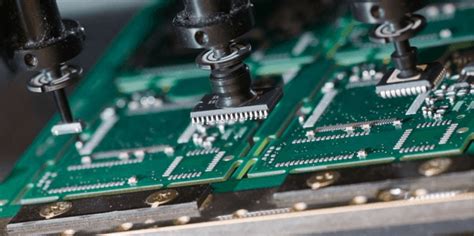
Sustainable Practices in PCBs: Balancing Quality and Eco-Friendliness
In the realm of pcb assembly and production, sustainability has emerged as a pivotal consideration for manufacturers aiming to align their practices with the growing demand for eco-friendly solutions. Companies are increasingly adopting strategies that not only enhance the efficiency and quality of their pcba processes but also mitigate their environmental footprints. One notable approach involves utilizing materials that are environmentally sustainable, such as lead-free solder and recyclable substrates, which contribute to reducing harmful waste. Additionally, implementing energy-efficient machinery during pcb production not only lowers operational costs but also curtails energy consumption. By developing a streamlined waste management system, manufacturers can further improve their sustainability metrics through recycling initiatives that recover valuable components from discarded PCBs, thereby minimizing landfill contributions. Emphasizing eco-friendliness in the pcb assembly process not only satisfies regulatory requirements but also enhances brand perception among consumers who are increasingly inclined to support companies with responsible manufacturing practices. As this trend continues to gain traction, balancing quality with sustainability becomes essential for driving innovation and maintaining competitive advantage in the ever-evolving electronics industry.
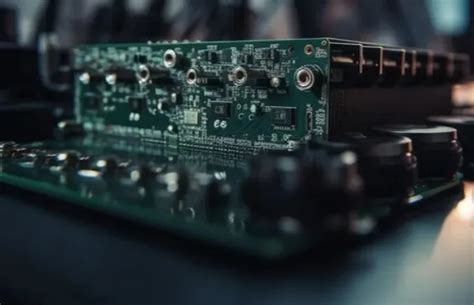
Future Trends Shaping the Landscape of PCB Industries
As the demand for more sophisticated electronics grows, the pcb assembly industry is poised for transformative changes driven by technological advancements and evolving consumer needs. One of the most notable trends is the integration of Internet of Things (IoT) technologies into pcba processes, allowing for smarter and more interconnected devices. This shift not only enhances functionality but also opens up new avenues for automation and real-time data analysis in production lines. Additionally, advancements in materials science are leading to the development of lighter, more durable substrates that can support higher frequencies while maintaining thermal stability. The push towards miniaturization demands innovations in both design and assembly techniques, encouraging manufacturers to adopt smaller components and intricate layouts without compromising quality. Sustainability is becoming another key focus; as industry players strive to create eco-friendly solutions, practices that minimize waste and promote recycling are gaining traction. These trends not only signify a shift in production capabilities but also reflect a broader commitment to improving overall efficiency and reducing costs in pcb production. As these dynamics unfold, staying attuned to these future trends will be essential for businesses aiming to thrive in an increasingly competitive landscape.
Conclusion
In the fast-evolving field of PCB production and assembly, it is essential to recognize the significance of adapting to emerging technologies and innovative strategies that enhance efficiency and quality. The integration of automation within the pcba process not only streamlines production but also minimizes human error, ultimately leading to a more reliable outcome. Furthermore, embracing a culture of continuous improvement can significantly elevate standards in equipment performance and operational processes.
As industries strive for cost reduction, identifying effective techniques in both production and pcb assembly is paramount. This can be achieved through meticulous planning, effective inventory management, and the implementation of lean manufacturing practices. Additionally, maintaining sustainable practices in pcba ensures that companies contribute positively to the environment while adhering to regulatory requirements.
Looking forward, it is clear that the future trends within the PCB industry will continue to be shaped by advancements in technology and an increasing focus on sustainability. By remaining agile and embracing a mindset centered around innovation, organizations can optimize their production processes and maintain a competitive edge in this dynamic market.
FAQs
What is PCB assembly?
PCB assembly, often abbreviated as PCBA, is the process of soldering and assembling electronic components onto a printed circuit board (PCB) to create a functional electronic device.
Why is quality control important in PCB production?
Quality control ensures that each PCBA meets technical specifications and functions as intended. It helps in identifying defects early, reducing the risk of malfunctions and enhancing overall product reliability.
What emerging technologies are transforming PCB manufacturing?
Emerging technologies such as automation, advanced materials, and smart manufacturing techniques are revolutionizing pcb production and assembly, leading to faster turnaround times, improved precision, and lower production costs.
How can companies reduce costs in PCB production?
Implementing lean manufacturing techniques, optimizing supply chain management, and using efficient machinery can significantly lower expenses. Additionally, focusing on efficient pcb assembly practices can contribute to overall cost reductions.
What role does automation play in modern PCB manufacturing?
Automation plays a critical role by streamlining the pcb assembly process, minimizing human error, and increasing throughput. Automated systems can also enhance precision in placing components on the board.





